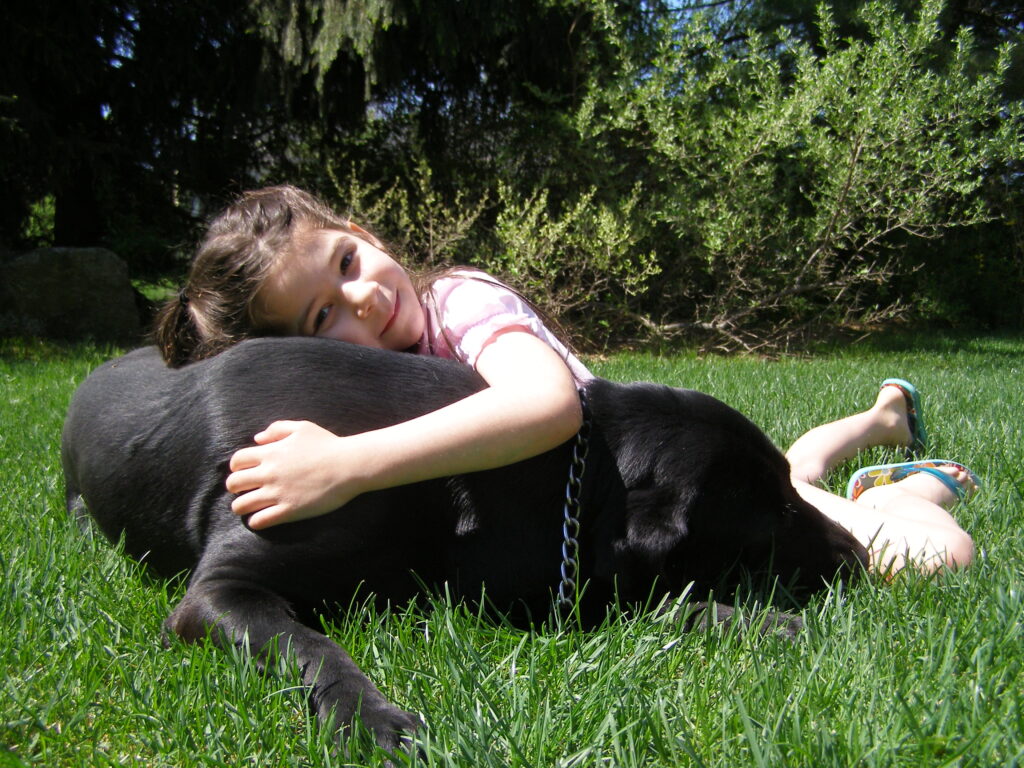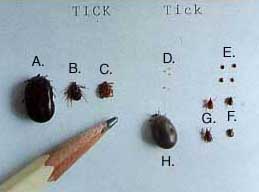This page is under construction

978-225-6000 call today

PICTURE COURTESY OF THE LYME DISEASE FOUNDATION
Dog ticks and black-legged ticks
compared to a pencil
Dog Ticks Black-Legged Ticks
A. Engorged female D. Larvae
B. Female E. Nymphs
C. Male F. Male G. Females
H. Engorged female

Tick lifecycle
How much does it cost and how many treatments are needed?
Property size and how much tick habitat requires treatment determine the cost. Our program requires a min of 3 treatments spring, summer and fall at different times of the tick’s life cycle. Tick density and the population of host animals varies by location so it ultimately determine how many treatments will be required. Monthly Treatments may be needed.
For example, on thickly wooded, tick-dense properties we may need to add additional services and space more treatments closer together.
Usually if you have tick habitat and host animals, then its a good chance your neighbors do also. If you get together you could help reduce the tick population within your neighborhood.
Sampling the Property for Ticks
Drag sampling is a good way to approximate tick presence. This is done by dragging a 3ft square white sheet over the areas that ticks would be found, i.e. wood lines, (up to 3’), tall grass, the first 10’ border of grass that meets the woods, etc. Ticks looking for a host will attach themselves to the drag cloth. When you turn the cloth over after dragging it 50-100 feet you may find ticks crawling on the cloth. This sampling has limitations depending on time of year, growth stages, and weather conditions. If you sample when ticks are not very active, a misleading negative finding may result. Also, a very small amount of the total tick population can be collected at any time. You can also get false negatives depending on time of year. One suggestion is to drag sample the same areas on 3 to 4 different days when conditions are favorable. This will give you a more accurate estimation.
Where do ticks live where do we Treat?
Properties that border woods, fields present the most risk. When ticks are detected we will treat:
The first 10-15’ border of grass that meets the woods, plus 10′-20′ into the woods.
Tall grass and weeds
Low brush (up to 36″)
Groundcover in shaded areas
Thickly landscaped beds where where appropriate.
Rock Walls , Brush & Woodpiles
Under porches and sheds.
LYME DISEASE & PETS
Lyme disease is a threat to dogs and cats. Almost every pet owner in Massachusetts has seen a tick on their pet at some point. The dog tick (Dermacentor variabilis) and the deer tick (Ixodes scapularis) are the two most common ticks in MA. Deer ticks are small, about the size of a pinhead Lyme disease is caused by the bite of an infected deer tick. The tick life cycle has four stages and completes in 2 years. All through out their life cycle they need blood meals to pass from larva to adult. This is where mammals play a role. Ticks can easily go undetected on you or your pet for days, which is why we recommend doing tick checks daily. Pets can carry ticks into your house and potentially expose everyone to a tick bite. Ticks can live in a house for up to 3 days before dying,due to a lack of moisture. If you let your pet on your bed or furniture you risk a tick bite. Ticks can easily migrate to you and go undetected. By
implementing a tick management program within your yard you will drastically lower you and your pet’s exposure to ticks.